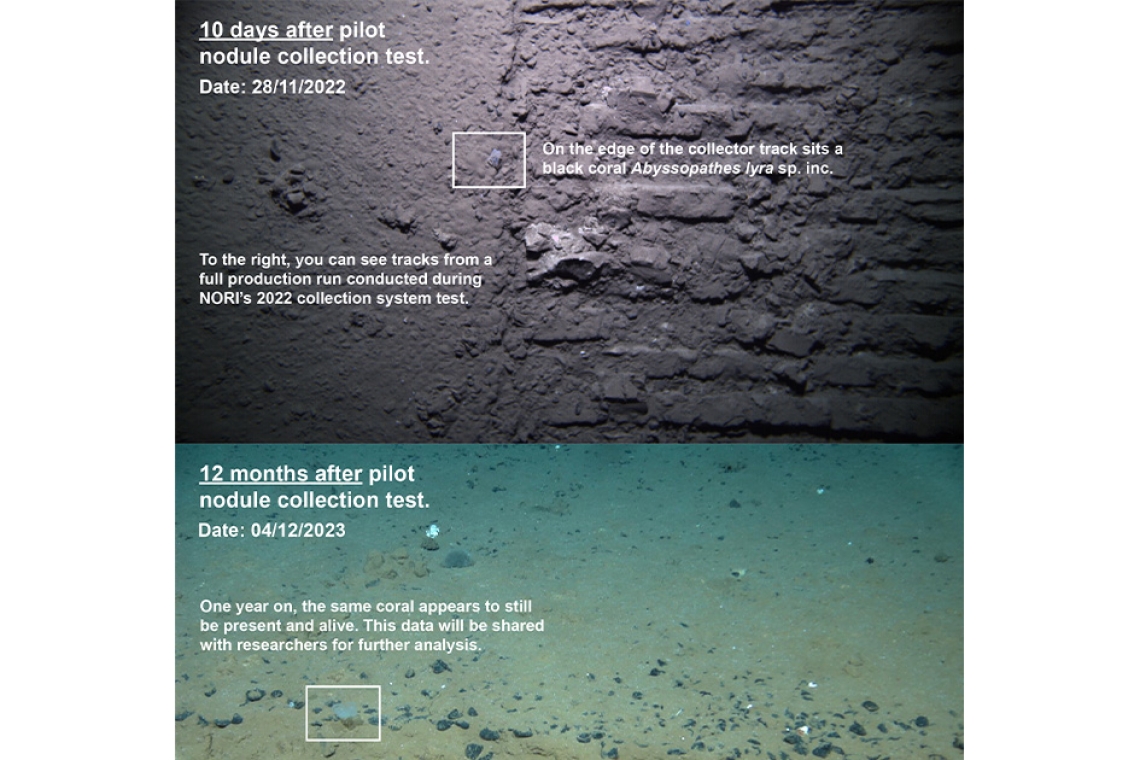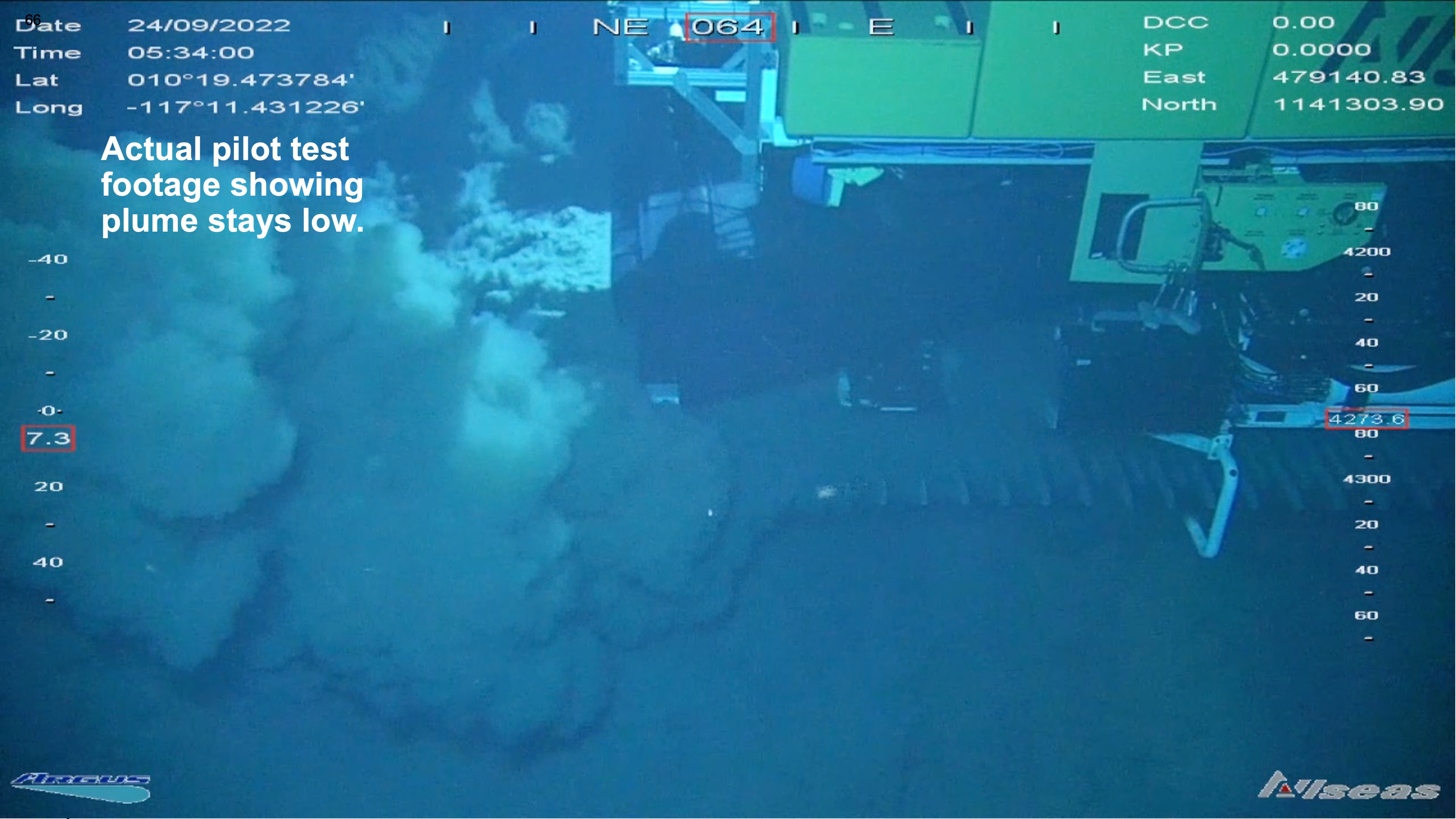TMC Subsidiary NORI Shares Preliminary Findings on Environmental Impacts of Pilot Nodule Collection System Test

TMC the metals company Inc., an explorer of the world’s largest estimated undeveloped source of critical battery metals, provided an update on the environment program of its NORI subsidiary, including a detailed overview of the latest research on the potential impacts of sediment plumes at the seafloor based upon emerging data from NORI’s 2022 pilot nodule collection system test.
Contrary to plume models created by NGOs that were widely publicized in the media, NORI’s preliminary benthic (seafloor) plume data and modelling show that sediment mobilized by its nodule collector vehicle at depths of approximately 4 kilometers (kms) forms a gravity-driven turbidity current that hugs the contours of the seafloor and does not loft up into the water column where it could possibly be transported longer distances by ocean currents.
Last month NORI provided an update on its environment program and shared the latest data on the characteristics of sediment plumes at the seafloor during a global stakeholder webinar.
During its 2022 nodule collection system trials, NORI worked with DHI Water and Environment—leading experts on sedimentation modeling—to implement a plume monitoring study. Over 50 assets and marine sensors were deployed to the 4 km x 2 km test field to collect data on all aspects of plume dynamics, concentration, and dispersal from which DHI have generated a verified plume model.
Building upon earlier laboratory predictions and in-field observations from previous collector tests by other contractors, multiple lines of evidence now show that the sediment plume at the seafloor is low-lying and that the dispersal of this mud is largely influenced not by ocean currents, as had been claimed, but by the contours of the seafloor. Given the efficient manner with which the Allseas-designed collector vehicle separates sediment at the seafloor, NORI believes the sedimentation footprint will narrow upon further in-field verifications taking place this month as part of its ongoing offshore campaign.
 Side view of seafloor plume. NORI now has multiple lines of evidence that indicate that the seafloor plume forms a gravity-driven turbidity current that hugs the seafloor and does not loft into the water column to be transported long distances by ocean currents, as has been widely speculated. (Image credit: TMC)
Side view of seafloor plume. NORI now has multiple lines of evidence that indicate that the seafloor plume forms a gravity-driven turbidity current that hugs the seafloor and does not loft into the water column to be transported long distances by ocean currents, as has been widely speculated. (Image credit: TMC)
Following a global stakeholder webinar to share the preliminary results, NORI Environmental Manager Dr. Michael Clarke commented: “These new findings demonstrate the shortcomings of developing plume models in the absence of any primary data and how this can lead to significant errors in the results. Models put forward by some activist groups claiming a vast area of impact are undermined by their lack of appreciation that the benthic plume forms a turbidity current spreading under its own weight away from the collector tracks, underlining the importance of investing in the science before engaging in speculation.”
In November, NORI provided additional details of its ongoing offshore environmental campaign to assess ecosystem function and recovery one year on from test mining, adding to the significant research conducted in the deep sea. Since the late 1960s, over 300 hundred offshore campaigns have been conducted in international waters with over $2 billion invested in environmental baseline and impact studies and technology development, with most of the capital invested by private companies. To address knowledge gaps, governments and contractors like NORI have spent over 9,000 days—the equivalent of almost 25 years—at sea, assessing the deep-sea environment, research and investment which has accelerated significantly since the establishment of the International Seabed Authority’s exploration regime.

